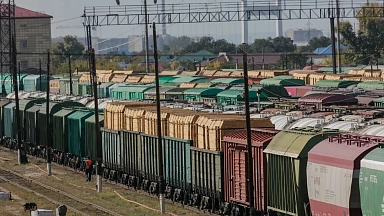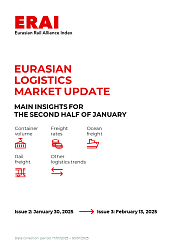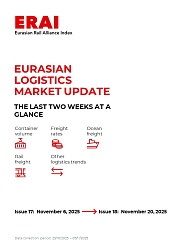The fact that so many countries joined BRICS in 2024 demonstrates the association’s growing appeal.
The BRICS expansion, with its countries forging closer ties among them, has been instrumental in shaping a new international trade architecture. BRICS countries account for almost half of the world’s population, a third of the planet’s territory and a quarter of international trade.
With its new participants, BRICS has increased its share of global GDP by purchasing power parity to 35 percent, and plays a special role in the global commodities market, with BRICS countries producing over 40 percent of the world’s oil and exporting about 25 percent of commodities. In addition, Brazil, China, India, Iran, Russia and South Africa are home to about 30 percent of the world’s iron ore reserves.
BRICS countries stand at the crossroads of the main international transport routes, which drives rapid growth in shipments using various transport means.
BRICS countries are strategically located along the world’s key international transport corridors, including the East-West corridor, the Belt and Road Initiative, the North-South сorridor, and maritime routes to Brazil and Egypt through ports in the Sea of Azov and the Black Sea. This diversity makes BRICS even more competitive in the logistics sector, enabling it to promote effective logistics cooperation.
BRICS promotes the principle of facilitating the emergence of an «open, transparent, non-discriminatory and inclusive multilateral trade system».
The guiding principles regulating foreign trade have critical importance when it comes to ensuring the fair distribution of the benefits and costs resulting fr om integration within BRICS considering the differences among its member countries in terms of economic structure and scale. For example, being the largest BRICS economy, China accounts for 42 percent of trade within the association, while Ethiopia’s share is equal to only 0.44 percent.
BRICS may make a meaningful contribution to making the global economy more stable by blending regional integration treaties across the Global South.
Iran’s accession to BRICS can play a pivotal role in developing transcontinental international trade routes considering that the country’s geographic location offers an opportunity for connecting north-south and east-west trade corridors. Iran lies between the Caspian Sea, the Persian Gulf and the Indian Ocean, wh ere many essential cargo shipments intersect, including the North-South international trade corridor. Transport infrastructure, especially ports and railways, is instrumental for unlocking its transit potential.
Developing railroads across the BRICS space is an essential factor for unlocking the association’s transport potential.
BRICS countries account for about 64 percent of the world’s shipments by rail. Combined, their railways cover over 382,000 kilometres, of which 213,000 have been electrified. About 8.4 billion tonnes of shipments transit through these routes every year.
In order for the BRICS states to remain interested in operating these transit routes in the long run, they must work on overcoming challenges in their respective transport and logistics sectors and container shipments, streamlining management and promoting region-to-region ties.
«Торговый потенциал и транспортная взаимосвязанность стран БРИКС после расширения 2024 года.» 2024. Росконгресс. Фонд Росконгресс. 2024. https://roscongress.org/materials/torgovyy-potentsial-i-transportnaya-vzaimosvyazannost-stran-briks-...




